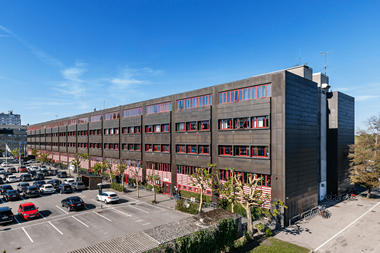Denmark’s PenSam is developing its real estate lending strategy by creating a new loan structure that is more attractive to developers and includes incentives to create value in construction projects.
PenSam, the labour-market pensions provider which manages around DKK110bn (€14.7bn) in overall assets, describes the innovative property loans as the next stage in its property debt investment activities.
The firm recently won the Nordic region award in the IP Real Estate Awards 2014 for its property loan financing approach, whereby it takes an equity stake in projects, allowing it to take control of the asset should the developer have to withdraw for financial reasons.
The firm recently won the Nordic region award in the IP Real Estate Awards 2014 for its property loan financing approach
The model – dubbed the Blue Ocean model – also means that PenSam invests at cost price, but could take over the project at below market value if the developer goes bankrupt.
Benny Buchardt Andersen, investment director of PenSam, told IPE: “We are now moving into the next stage of this and we are in negotiations right now.
“What we are doing is giving the developer the opportunity to leverage their management fee,” he said.
PenSam was an early mover among European pension funds in real estate debt, having begun lending to property developments in 2011, and now has about DKK1bn invested in property debt.
The debt exposure represents a 10% overlay on the pension fund’s traditional property allocation, Buchardt Andersen said, since it has DKK10bn invested in real estate in total.
Construction financing remains very hard for developers in Denmark to obtain, as a continuing effect of the global banking crisis.
Buchardt Andersen said banks were not giving loans to projects with uncertain and backloaded cashflows.
Under PenSam’s new breed of financing deal, he explained, the developer used half of their management fee to invest in the project itself, therefore potentially receiving a return linked to the final sale price of the property at the end of the project.
“We are lending directly to the project, but we are also saying to the developers, you will be co-investors in the scheme, so that interests are aligned.
“We lower the management fee, and they then effectively have around 20% of the management fee in equity,” he said.
This is not only more attractive to the developer because it gives them a high potential total reward, but also incentivises them to create as much value in the project as they can, he said.
PenSam is currently in negotiations over three projects using this new incentivised financing model, he said.
As a co-investor, Buchardt Andersen said, the developer is motivated to act in the lender’s interests, because the economics become the same for both parties.
“They own a part of the property and therefore get a better profit when the sale price is maximised and costs are minimised,” he said, contrasting this to the conventional approach under which the developer simply receives a fee as a percentage of assets under management.
“In that case, the cost and sale price don’t change their profit but is our — the investor’s — risk,” he said. “And when they market a project as having a high value, under the traditional method they aren’t hurt if they are wrong.”
Buchardt Andersen believes the new model would be a revolution if it were introduced in the asset management industry within traditional listed equities investment.
“It corresponds to a model where a manager co-invests their management fee and gets paid if they beat the benchmark after financing costs,” he said.











